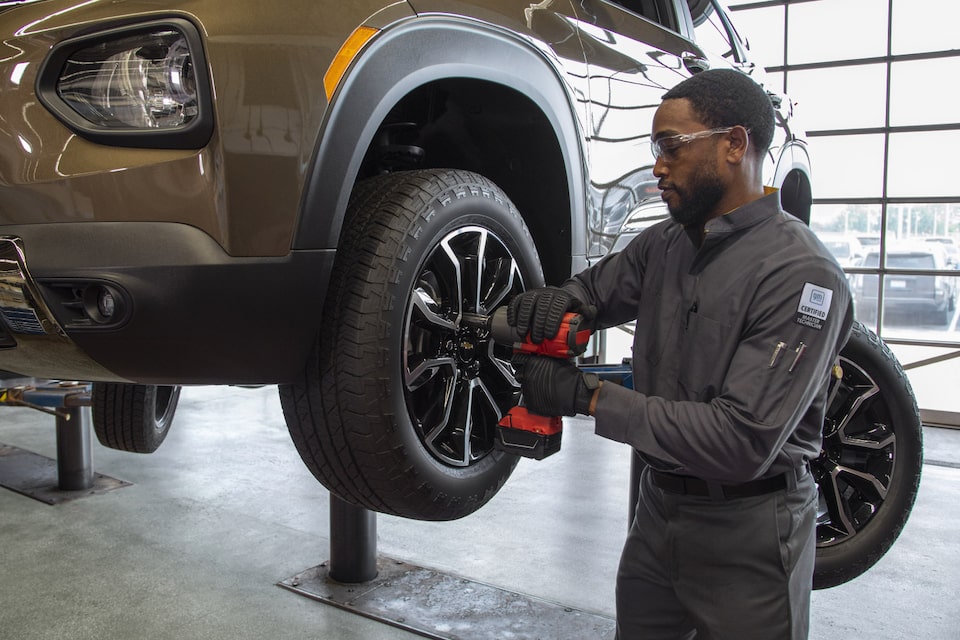Expert Morris Tire and Alignment: Improve Your Car's Performance
Expert Morris Tire and Alignment: Improve Your Car's Performance
Blog Article
Tire Service: The Impact of Weather Condition Conditions
When it comes to guaranteeing optimum performance and safety and security on the road, comprehending the influence of weather condition problems on tire service is critical. In this discussion, we will certainly explore the complex relationship in between climate conditions and tire solution, losing light on the significance of weather-specific tire upkeep methods and considerations.
Warm and Tire Efficiency
When exposed to high temperature levels, tires experience adjustments in efficiency that can substantially affect vehicle safety and handling. The heat produced from long term driving or warm climate problems causes the tire rubber to soften, leading to reduced tread life and enhanced wear.
In addition, high temperatures can increase the process of tire aging, creating the rubber to degrade extra swiftly. To mitigate the results of heat on tire performance, vehicle drivers ought to frequently examine their tire pressure, rotate tires to make certain even put on, and check for any type of indications of damage.
Cold Weather Condition Effects
Winter conditions can have a considerable effect on tire performance and safety. As temperature levels decrease, tire rubber can harden, causing lowered grip on icy or snow-covered roads. In winter, tires may additionally shed air pressure a lot more swiftly, which can affect managing and fuel effectiveness. In addition, cold temperature levels can create tire sidewalls to tense, increasing the danger of damages from potholes or other road threats.
To minimize the impacts of chilly climate on tires, it is crucial to routinely check tire pressure and inflate them to the manufacturer's recommended levels. Using wintertime or all-season tires made for cold weather conditions can also enhance traction and grip on icy or snowy roads - tire shop morris. Appropriate tire maintenance, consisting of normal examinations for wear and damages, comes to be also a lot more essential throughout cooler months to guarantee ideal efficiency and security
Rainy Conditions Impact
Throughout rainy conditions, tire efficiency and safety and security can be considerably influenced by the damp roadway surfaces and reduced exposure. The step pattern of tires plays an important duty in maintaining traction on wet roadways. Tires with worn-out treads are much more prone to hydroplaning, where a layer of water develops in between the road and the tire surface area, bring about loss of grip. To fight this, vehicle drivers ought to on a regular basis inspect their tires for sufficient walk deepness and consider purchasing tires particularly created for damp conditions.

Snow and Tire Safety And Security
When driving in snowy conditions, having the ideal tires can make a substantial difference in safety and security and performance. Winter months tires are created with special rubber substances and walk patterns to offer better traction on snow and ice contrasted to all-season tires.
Along with utilizing winter season tires, it is crucial to guarantee they are correctly pumped up. Winter can trigger tire stress to drop, impacting grip and handling (mopar tire service specials). Consistently inspecting and keeping the correct tire pressure is essential for ideal efficiency in snowy conditions

Weather-Related Tire Maintenance
When faced with various weather, appropriate tire maintenance becomes an essential aspect of lorry safety and performance. Weather-related tire maintenance incorporates an array of methods targeted at making sure ideal tire function and long life in various climate situations. One essential facet of weather-related tire upkeep is tire pressure regulation. Fluctuating temperature levels can trigger tire stress to differ, impacting traction and gas effectiveness. On a regular basis inspecting and readjusting tire stress according to producer go to the website recommendations is crucial for risk-free driving in transforming weather. In addition, tire tread deepness plays a significant duty in handling various weather components. Tires with adequate walk deepness give better hold on damp or icy roads, minimizing the risk of hydroplaning or skidding. Examining tire step frequently and changing tires when tread wear reaches a particular depth is crucial for maintaining traction and stability in negative weather. By prioritizing weather-related tire maintenance, motorists can boost safety and security, boost car efficiency, and lengthen the life-span of their tires.
Verdict
In verdict, weather have a substantial influence on tire performance and safety. From warmth influencing tire stress and use to winter reducing grip, it is necessary to consider the climate when preserving and utilizing tires. Wet conditions can decrease grasp and cause hydroplaning, while snow can increase the risk of mishaps if tires are not appropriately geared up. Weather-related tire maintenance is crucial in making sure optimum efficiency and security when traveling.
In this conversation, try this web-site we will check out the detailed connection in between weather condition problems and tire service, losing light on the value of weather-specific tire maintenance techniques and considerations.

Report this page